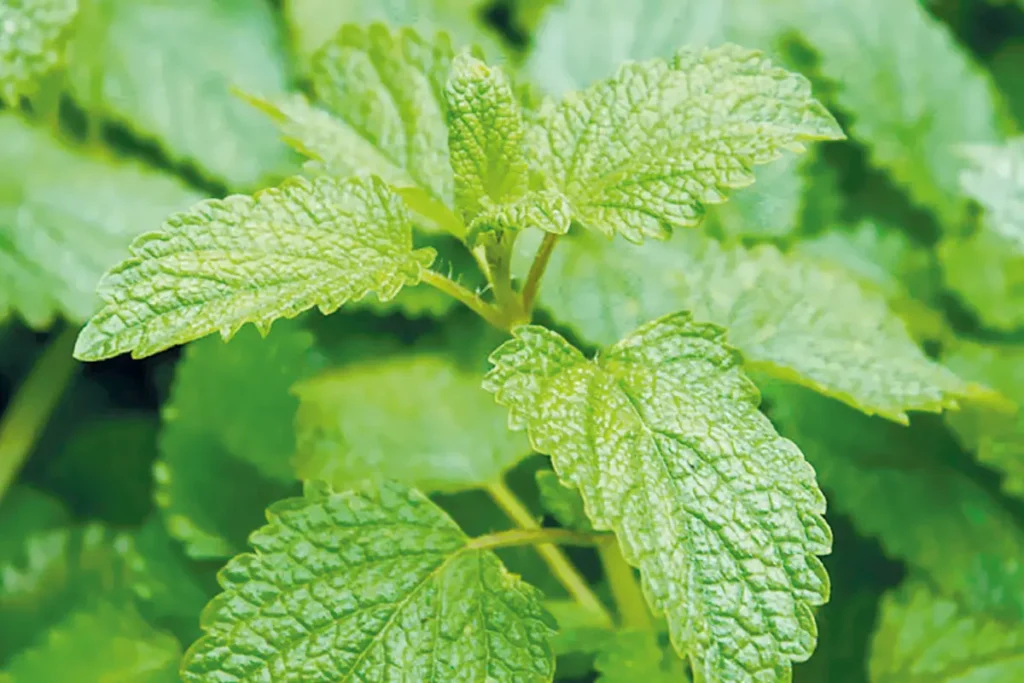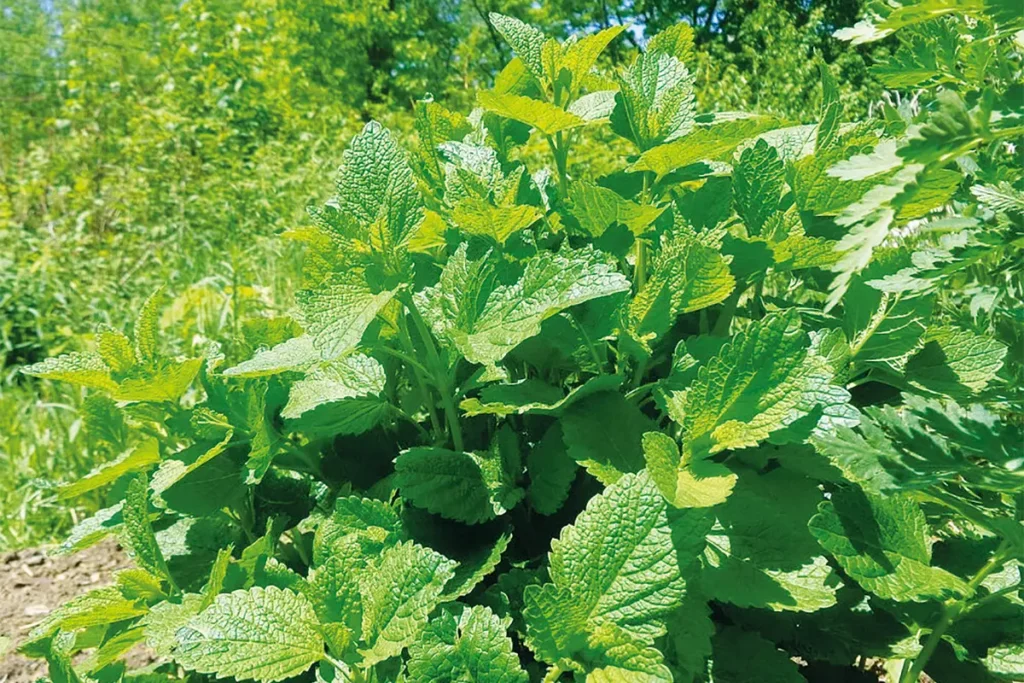


Nome Italiano: Melissa o erba limona
Nome scientifico: Melissa officinalis L.
Nome Gallurese: Mentuccia / Limonina
Descrizione:
Pianta erbacea, perenne che cresce spontanea, con rizoma orizzontale lignificato, cresce fino ad 1 metro, fusto eretto, quadrangolare, ramificato, tomentoso. Foglie picciolate, ovali romboidali, lucide nella pagina superiore, dotate di peli di rivestimento. Fiori piccoli, bianchi, bilabiati disposti su infiorescenze peduncolati alle ascelle fogliari superiori. Tutta la pianta emana un gradevole odore di limone ed ha sapore leggermente amaro.
Proprietà e usi:
Pianta diffusa nel Mediterraneo di cui si usano a scopo curativo foglie e fiori. Ha funzioni sedative, antispastiche (sul tratto gastroenterico e genito-urinario), antivirali, antibatteriche, antifungine e cicatrizzanti (quando applicata a livello locale). Grazie ai suoi oli essenziali, questa pianta è un ingrediente prezioso nella cura di molti disturbi. Ottima in caso di ansia e preoccupazioni, si distingue anche per le sue proprietà sedative, utili per contrastare i sintomi influenzali. Assunta sotto forma di tisana, contribuisce invece ad abbassare la febbre ed eliminare le tossine in eccesso. Considerata ottimo rimedio contro la malinconia.
Curiosità e miti:
“Melissa: signora delle api e del miele”. Il nome Melissa, in greco ape, è stato attribuito a questa specie per la preferenza delle api a visitare i fiori da cui ricavano un ottimo miele, tant’è che l’infuso di melissa viene considerato una medicina proprio per le api, aiutando a mantenerle in buona salute ed immuni da malattie. Secondo le teorie delle Segnature di Paracelso è la pianta per eccellenza dedicata a Venere per le sue proprietà medicinali che curano i disturbi femminili.

Italian name: Melissa o erba limona
Scientific name: Melissa officinalis L.
Gallurese name: Mentuccia / Limonina
Description:
Herbaceous, perennial plant growing wild, with lignified horizontal rhizome, growing to 1 metre, erect, quadrangular, branched, tomentose stem. Leaves petiolate, oval, rhomboid, shiny on the upper page, with covering hairs. Flowers small, white, bilabiate arranged on pedunculate inflorescences at the upper leaf axils. The whole plant exudes a pleasant lemon odour and has a slightly bitter taste.
Properties and uses:
Plant widespread in the Mediterranean whose leaves and flowers are used for medicinal purposes. It has sedative, antispasmodic (on the gastro-intestinal and genito-urinary tracts), antiviral, antibacterial, antifungal and healing functions (when applied locally). Thanks to its essential oils, this plant is a valuable ingredient in the treatment of many ailments. Excellent in cases of anxiety and worry, it also stands out for its sedative properties, which are useful against flu symptoms. Taken in the form of herbal tea, it helps to lower fever and eliminate excess toxins. Considered an excellent remedy against melancholy.
Curiosities and myths:
‘Lemon balm: lady of the bees and honey’. The name Melissa, Greek for bee, was given to this species because of the bees’ preference for visiting the flowers from which they obtain excellent honey, so much so that lemon balm infusion is considered a medicine for bees, helping to keep them healthy and immune to disease. According to Paracelsus’ Signature theories, it is the plant par excellence dedicated to Venus for its medicinal properties that cure female ailments.
